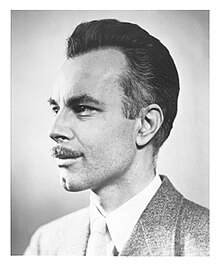George Arthur Philbrick | |
|---|---|
 George A. Philbrick. Photographer: John Brook. | |
| Born | January 5, 1913 Belmont, Massachusetts |
| Died | 1974 |
George A. Philbrick was responsible, through his company George A. Philbrick Researches (GAP/R), for the 1953 commercialization and wide adoption of operational amplifiers, a now-ubiquitous component of analog electronic systems, and the invention and commercialization of electronic analog computers based on the operational amplifier principle. He also created the first electronic training simulator, the Polyphemus. The invention, or co-invention, of the operational amplifier has also been credited to a number of other people, including a war-needs driven Bell Labs team led by Clarence A. Lovell (C. A. Lovell et al., 1940 ff.) and Loebe Julie.
The actual naming of the operational amplifier likely occurred in the classic 1947 paper by John Ragazzini, et al. However analog computations using op amps as we know them today began with the work of the Clarence Lovell-led war needs group at Bell Labs, around 1940 (acknowledged generally in John Ragazzini's paper). In 1952, George A. Philbrick Researches (GAP/R) introduces the K2-W, considered the “Model T” of op amps.